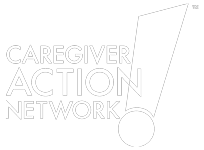Heart Failure Navigator: Where Does a Caregiver Start
Heart Failure Navigator: Where Does a Caregiver Start


As the caregiver for a loved one who has been diagnosed with heart failure, it can be tough to wrap your head around what that means and how you plan for the future. It can also at times be challenging to convince healthcare staff of the diagnosis, particularly in emergency room settings, where they may not be as familiar with your loved one’s diagnosis. This info will help you better understand the diagnosis and help you as a caregiver speak with your loved one’s care team.
Heart Failure Symptoms
As a caregiver for a loved one with heart failure, it’s important to understand the symptoms and how they impact your loved one. There is a wide range of symptoms, but they commonly include:
- Fatigue
- Shortness of breath during activity or while at rest
- Chest discomfort
- Swelling of lower extremities
- Decreased tolerance during physical activity, like exercise
To learn more review the Heart Failure Patient Empowerment Tool.
Conditions With Similar Symptoms
As the caregiver for a loved one with heart failure, getting to Heart Failure diagnosis can be incredibly challenging, as it shares symptoms with many other related and unrelated conditions.
Being aware of these can be especially helpful when you find yourself at the ER and being treated by medical staff who may not be as familiar with your loved one and their diagnosis. These commonly misdiagnosed conditions include:
- COPD (Chronic Obstructive Pulmonary Disease): Shortness of breath, chest discomfort
- Diabetes mellitus: Fatigue, tingling and swelling of feet
- Anemia: Fatigue, shortness of breath
- Renal dysfunction: Fatigue, chest pain or discomfort, shortness of breath, swelling of lower extremities
- Sleep Disordered Breathing: Shortness of breath while at rest
To learn more review the Heart Failure Patient Empowerment Tool.
HFpEF vs. HFrEF: How They Differ
As a caregiver of a loved one with heart failure, it’s important to have a high level understanding of the different types of heart failure.
With HFpEF and HFrEF, misdiagnosis can be common and knowing some of the differences and nuances, can be useful in ensuring your loved one gets the care they need.









